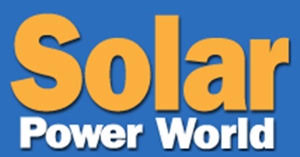SAN FRANCISCO/LOS ANGELES, Aug 8 (Reuters) - Tesla Inc’s production of solar roof tiles has been delayed by assembly-line problems at its new publicly subsidized factory and difficulties producing a product that satisfies the aesthetic demands of CEO Elon Musk, eight former and current employees of both companies told Reuters.
Repeated hold-ups since the Buffalo, New York plant opened last year have forced Tesla’s partner in the joint venture, Panasonic, to seek other buyers for the components it had built to sell to Tesla, according to a Panasonic employee, a former Panasonic employee and a former Tesla employee. The issues have also rattled the faith of state officials in Tesla’s ability to deliver on investment and employment promises it made in exchange for $750 million in state subsidies.
The production challenges add to doubts over Tesla’s cash-strapped solar operations as it focuses on boosting production of its better-known electric vehicles, which have also seen repeated production delays. Tesla acquired the solar business in 2016 in a controversial $2.6 billion purchase of SolarCity - a sales and installation company founded by two of Musk’s cousins - but the business has been shrinking ever since.
(For a graphic showing the decline in Tesla's solar business, see: tmsnrt.rs/2KjWlYU )
The “Solar Roof” produced at the New York factory is designed to look like a normal roof while generating electricity, a combination that has proved challenging.
“Aesthetic look is the key point that Elon is always not satisfied with,” said another former Tesla employee, who works in Fremont, California. “That’s the big issue.”
In a call with Tesla investors last week, Musk said “hundreds” of homes already had solar roofs, but the company clarified the estimate in its statement to Reuters, saying it included systems that had been partially installed or were “being scheduled for install.”
In California, the nation’s leading solar market, there were twelve Tesla roof systems connected to the grid as of May 31, all in Northern California, according to records from the state’s three investor-owned utilities. The cost per watt for those systems was listed at nearly $6, according to the records. That’s about double the national average for solar systems.
Tesla began accepting $1,000 deposits from customers for the Solar Roofs in May 2017, seven months after it unveiled a prototype.
Tesla confirmed in a statement to Reuters that it has been seeking to improve on its production process for the solar roof at the New York plant.
“We are steadily ramping up Solar Roof production in Buffalo and are also continuing to iterate on the product design and production process,” the company said in the statement. “We plan to ramp production more toward the end of 2018.”
The company did not detail its current production and did not comment on its component purchases from partner Panasonic, which shares space in the factory and plans to produce Tesla solar panels and photovoltaic cells for the roofs.
Panasonic has been selling some of the solar panels it produces in Buffalo under its own brand instead of selling them to Tesla, Panasonic said in a statement.
It has also been shipping a large volume of the photovoltaic cells it produces in Buffalo as samples to prospective buyers because of low demand from Tesla, according to the Panasonic employee and a former Tesla employee.
Panasonic declined to comment on the shipments of cell samples to other customers but said in a statement that it has not yet completed sales to buyers other than Tesla or signed alternate supply deals.
“We believe Tesla will use Panasonic cells when it mass-markets the Solar Roof,” the company said in a statement.
Some New York state lawmakers worry Tesla may fail to hold up its end of the bargain. The state provided $350 million to build the factory, along with $274.7 million for equipment and $125.3 million “for additional specified scope costs,” according to a Tesla filing with the Securities and Exchange Commission.
The subsidy package requires Tesla to employ 1,460 people in Buffalo, including 500 at the plant, within two years of the facility’s completion, and to spend $5 billion in the state over a decade.
Empire State Development, the state’s economic development arm, is overseeing the agreement. The agency believes Tesla is currently meeting its obligations, said spokeswoman Pamm Lent, adding that the company would face penalties of $41.2 million a year if it falters.
Republican New York state Assemblyman Ray Walter, who represents a district near the factory, said it concerned him that only a small portion of the plant appeared functional when he toured it in March.
“After investing $750 million of taxpayer money, we want it to work out,” he said. “It just does not look like it’s heading down that path.”
Tesla said in its statement that the facility now employs about 600 people and is on track to meet all of its commitments.
None of the Tesla sources could provide a production figure for the solar roof, saying only that output was low and frequently interrupted. They said only the textured black version of the solar roof had been produced so far, one of four varieties Tesla is marketing.
Several of the sources at the plant said Musk had never visited the site; Tesla declined to comment.
EQUIPMENT IN BOXES
Panasonic recently produced about 1,900 conventional 325-watt solar panels per day at the plant, meant to be sold under the Tesla brand, and about 2,000 5.5-watt photovoltaic cells per day that were intended for the solar roof, according to two Panasonic sources, one who recently left the company.
That would put annualized production at about a quarter of Tesla’s target for the plant, which is 1 gigawatt per year by 2019. And Tesla isn’t buying most of the cells being produced, according to the Panasonic employee.
“We have been entertaining outside customers,” the employee said.
Tesla is also turning to other suppliers to deal with the aesthetic concerns, using cells from JA Solar because they reflect light differently, said a current Tesla employee and a former Tesla employee. The current employee said a similar Panasonic cell was now undergoing testing and would be used in future versions of the solar roof.
JA Solar declined to comment.
Panasonic started cell production at the factory in February, but recently shut down manufacturing to install new equipment on its production lines, the Panasonic employee said. Full production will restart in September, the employee said.
For now, wooden crates filled with unused equipment are sitting around the factory, according to the Panasonic employee and three other employees with knowledge of the plant operations. Some of that equipment has become obsolete over the past couple of years as technology has changed, two of the workers said.
MIXED REVIEWS
One of the few customers that has taken delivery of the Solar Roof is Tri Huynh, 39, who works in business development in Silicon Valley. Huynh said he paid about $100,000 for the system, which included three Tesla Powerwall home batteries to store the power produced.
It took two weeks and a dozen workers to install, compared to a day for most traditional panel systems.
“It’s fantastic. I love it,” he said, adding he was saving hundreds of dollars a month in power costs. “I’m a tech guy, so I kind of wanted the latest technology.”
Warren Jason, a retired technology entrepreneur who is building an 11,000-square-foot house in the Hollywood Hills, is not so pleased.
He put down $1,000 to reserve a roof in early 2017 but it has not yet arrived, and he has been unable to get details to give to his architect and engineers.
“We’ve been begging Tesla for information,” he said. “It’s been extremely frustrating.” (Additional reporting by Makiko Yamazaki and Ritsuko Ando in Tokyo; Editing by Richard Valdmanis and Brian Thevenot)









![A crew installs solar panels on the roof of Mayflower Congregational Church UCC in Oklahoma City in 2016. State officials are working on issues that could expand the technology's use within Oklahoma. [hoto by Chris Landsberger, The Oklahoman Archives]](http://cdn2.newsok.biz/cache/large960_blur-edb3225ffc5ce673d8b9c9be02fdf9b3.jpg)



